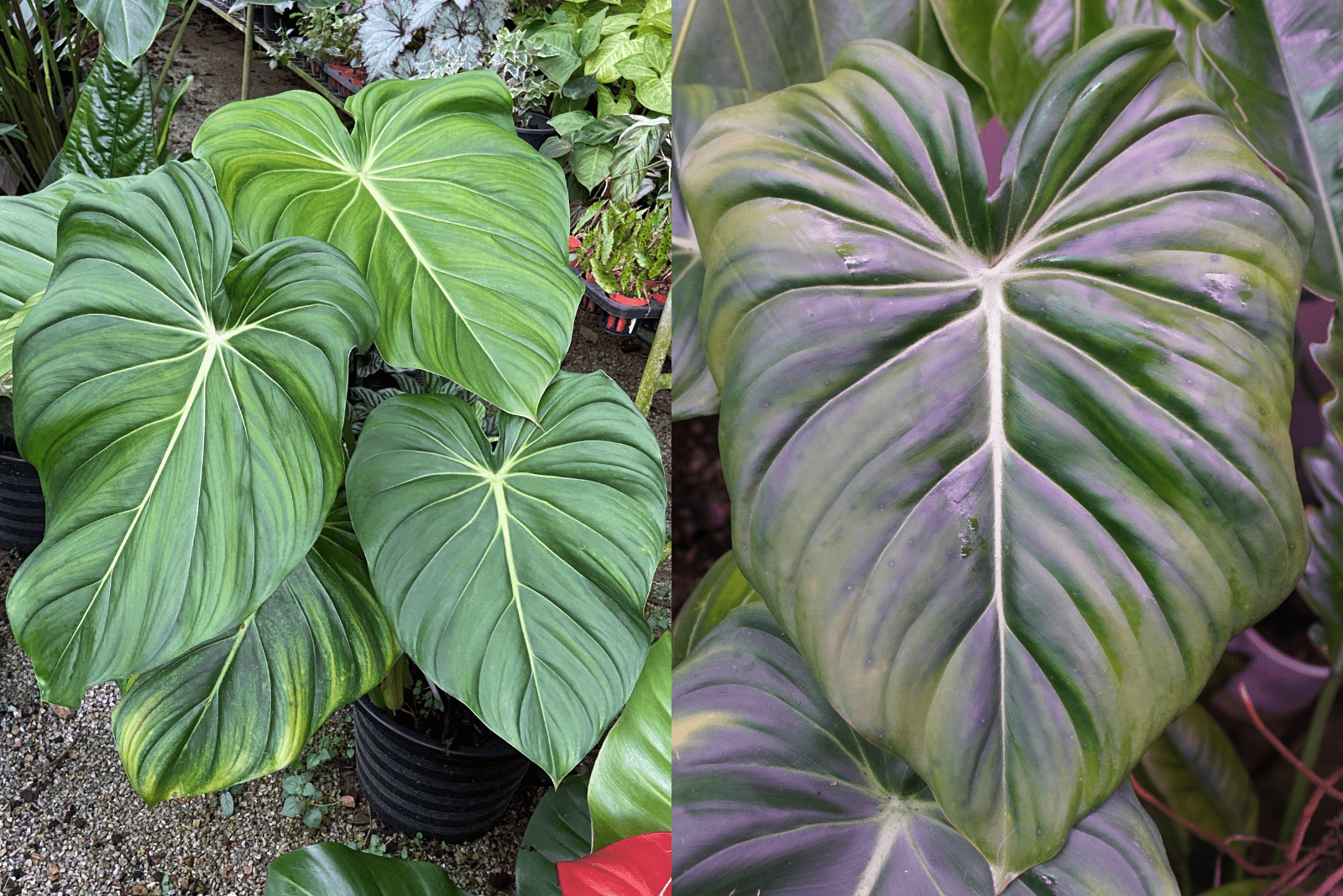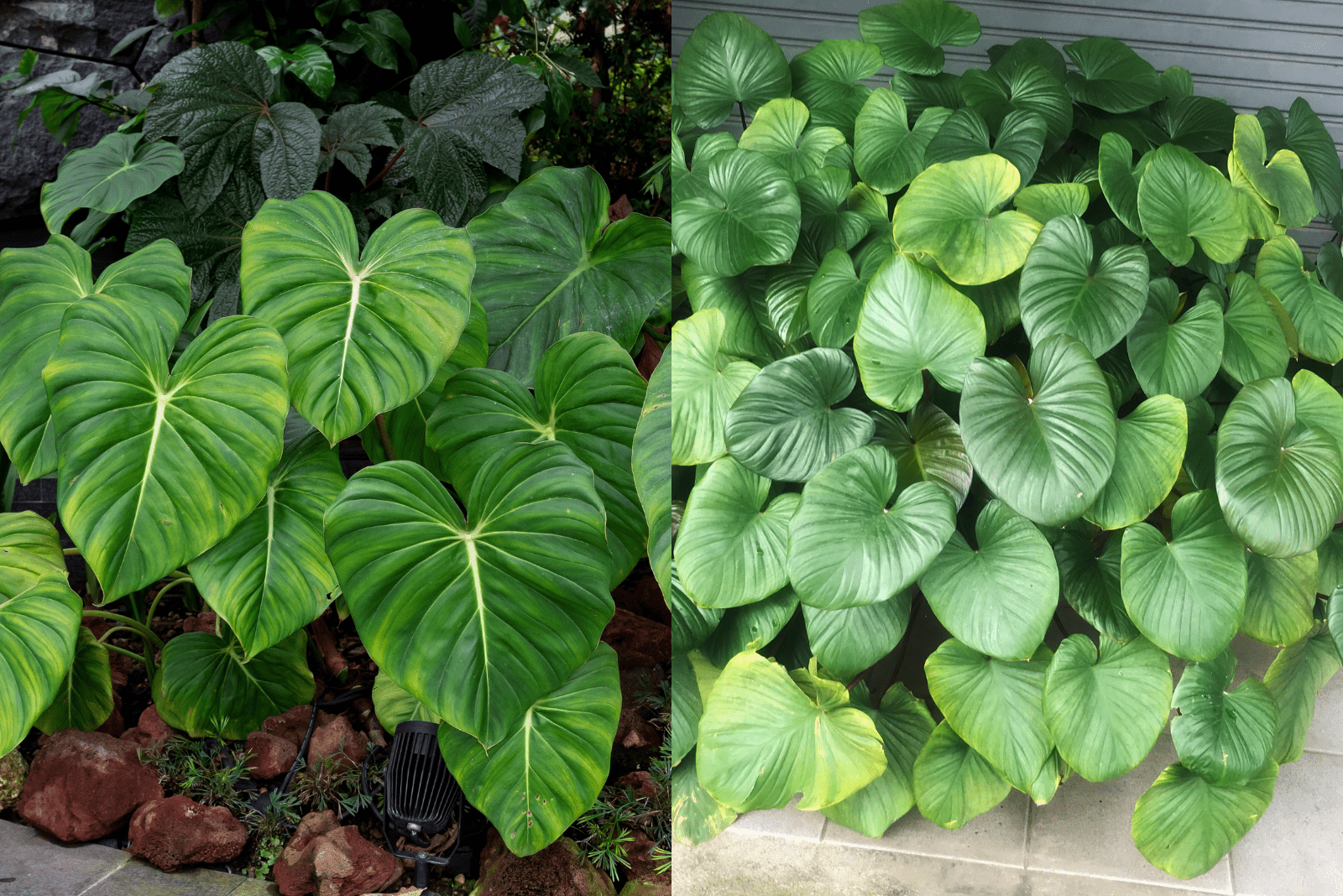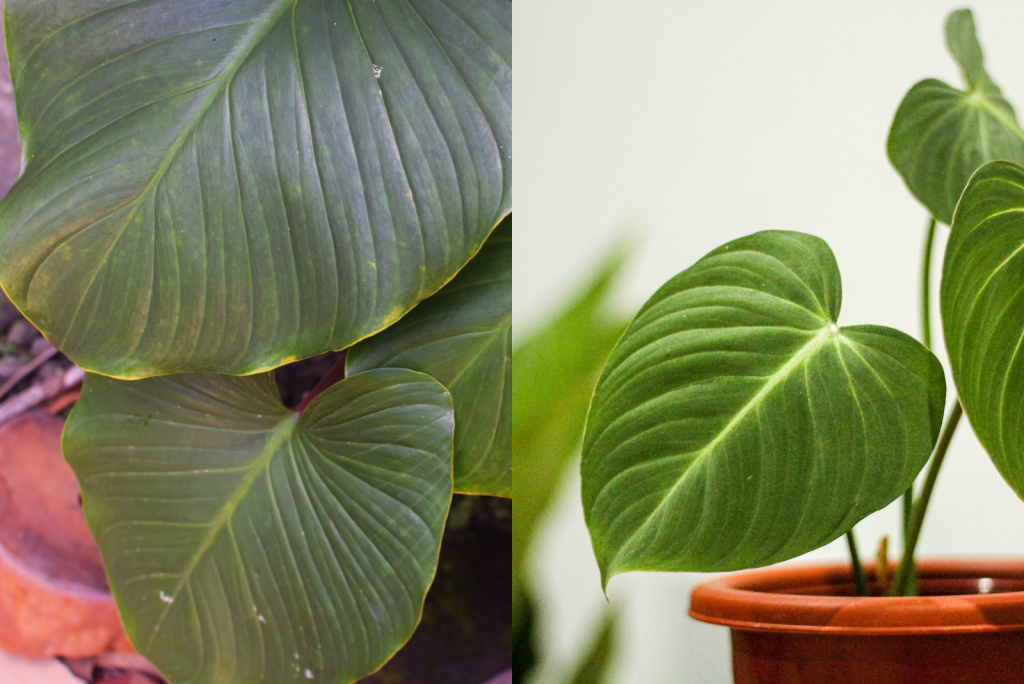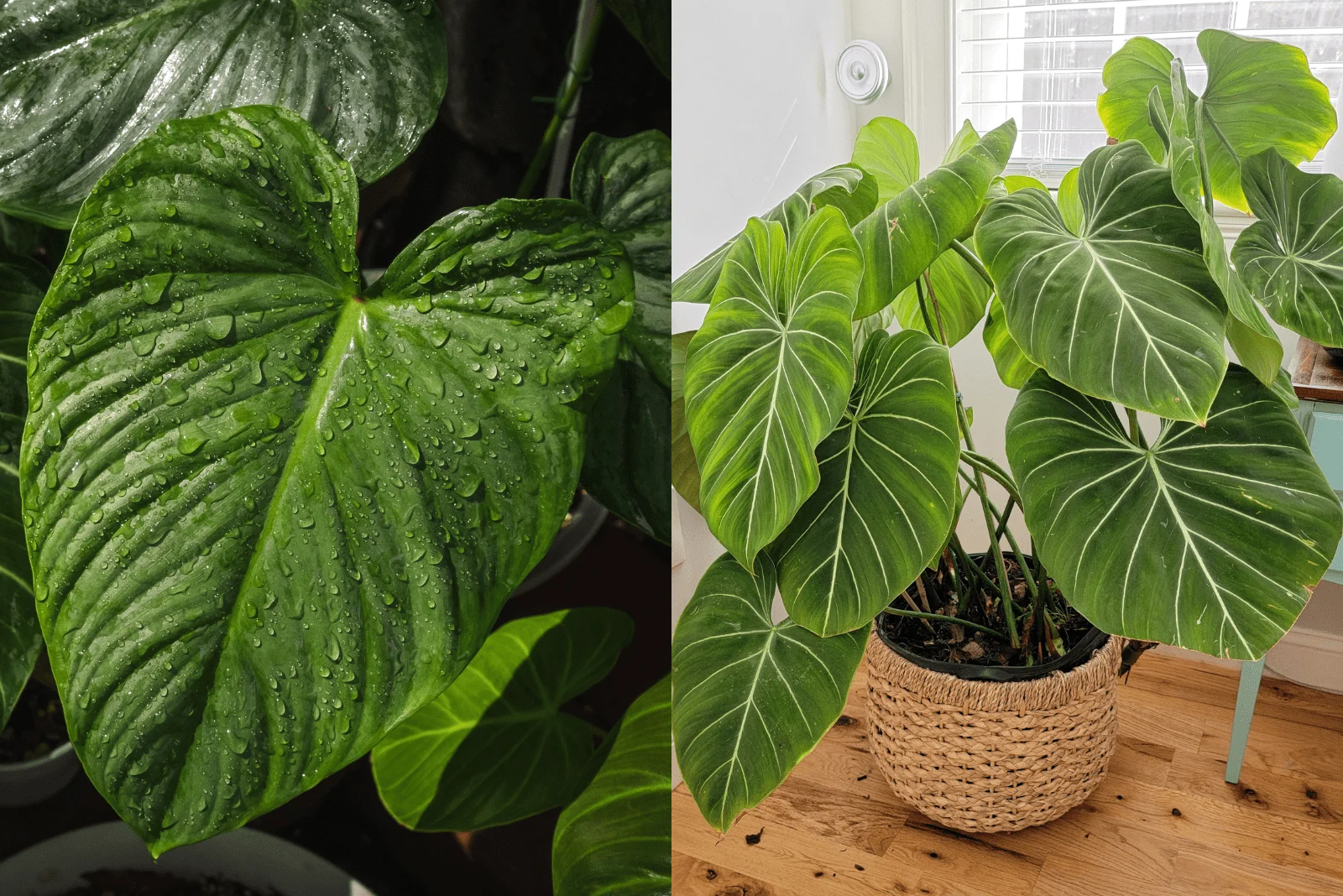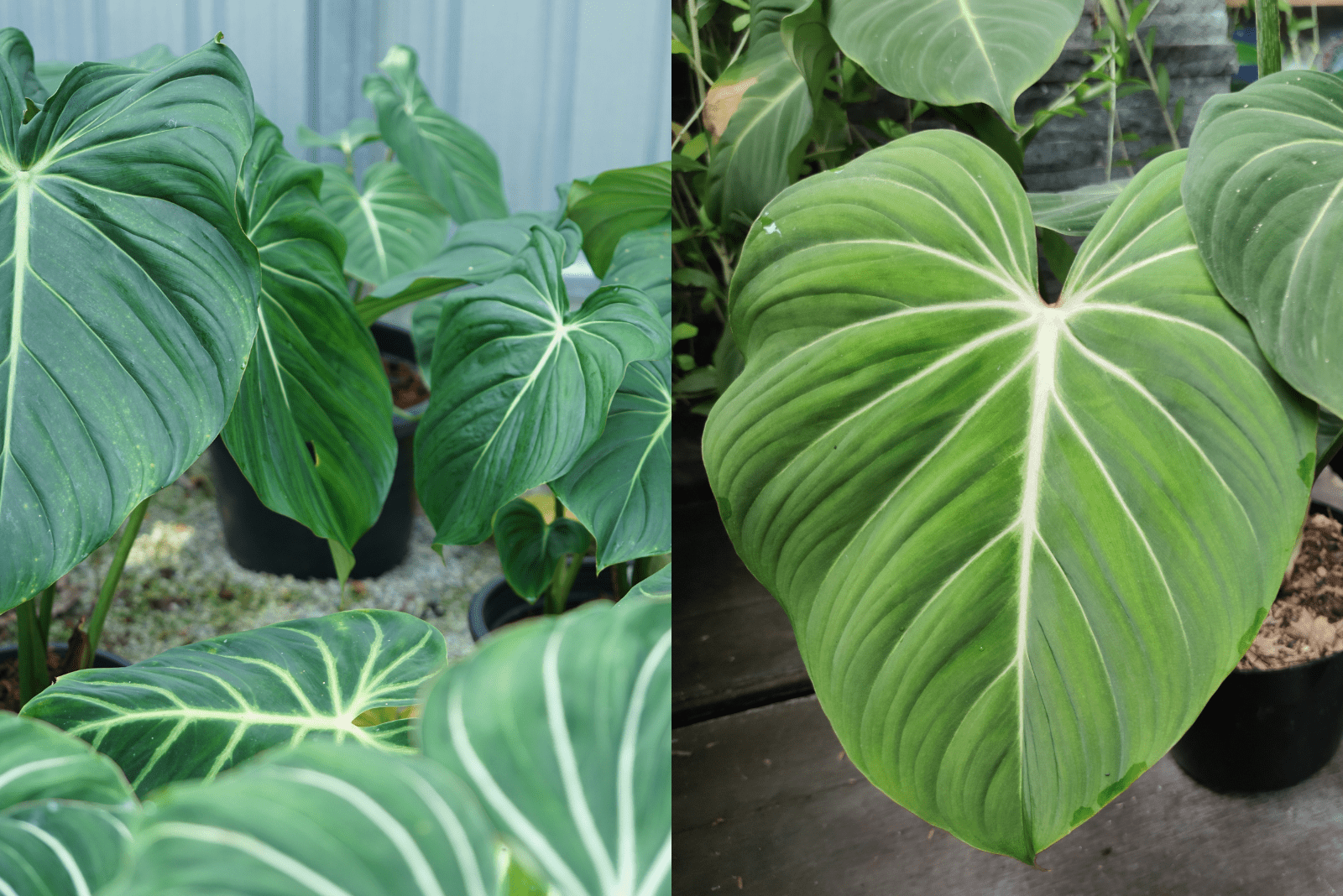There are over 400 Philodendron species out there, so distinguishing one species from another can be difficult, especially when they all look alike!
Today, many Philodendron species are actually hybrids that were produced by combining two Philodendron species. This is the case for today’s subject: the Philodendron McDowell.
This Philo was made by crossing the Philodendron Pastazanum with the Philodendron Gloriosum. It was produced by a botanist called John Banta, who actually named this Philo after his friend, Dean McDowell.
So, the full name of this Philodendron is actually Philodendron Dean McDowell, but we usually call it Philodendron McDowell. This plant bears a remarkable resemblance to one of its parents, the Pastazanum Philo.
Therefore, we are going to analyze Philodendron McDowell vs Pastazanum, and how to differentiate one from the other, so stay tuned!
Philodendron McDowell Vs Pastazanum: Key Differences
Both of these Philodendron varieties would make a great addition to your plant collection, but if you only have one spot left for a new Philo plant, which one should you choose?
First, let’s discuss some of the differences between McDowell and Pastazanum, though they are very hard to notice.
Philodendron houseplants are all about the leaves, so this is where we can spot our first difference. When we look at the texture of the leaves, we can see that P. McDowell has a more matte and less shiny texture compared to P. Pastazanum, which has extremely glossy leaves.
The McDowell has reddish leaf margins, and the new leaves have pinkish veins on the underside, while Pastazanum’s leaves are completely green.
The next thing we can look at is cataphylls. The Pastazanum has green ones, while the McDowell has more reddish cataphylls.
Lastly, they also have somewhat different petioles. For instance, Philo McDowell produces petioles that have long and prominent white lines. When we look at the Pastazanum’s petioles, we can see that they have short and less visible striations.
Philodendron McDowell Vs Pastazanum: Similarities
Philodendrons McDowell and Pastazanum are rare plants that have similar characteristics and plant care. These are both aroid tropical plants that don’t grow very tall (usually about 3 feet), and they both have heart-shaped leaves.
McDowell is a terrestrial climber, which means that it crawls along the forest floor instead of climbing trees. It inherited this trait from Philodendron Gloriosum, which is often used for ground covers.
All three Philos belong to the Araceae family, and now it’s time to meet the parents!
Philodendron Pastazanum & Gloriosum
Philodendron Pastazanum has heart-shaped, glossy leaves that have prominent white veins on the surface. They cannot be referred to as climbers or creepers like P. Gloriosum or McDowell, but they grow in a somewhat combined manner. For instance, their rhizomes grow horizontally above the ground and produce foliage.
The rhizome becomes more noticeable and partially emerges from the soil once it has grown to a height of 3 feet. The growth rate of Philodendron Pastazanum is moderate, as opposed to the fast growth of Philodendron McDowell.
Philodendron Gloriosum is an evergreen Philo that also crawls on the ground (just like its son!). This is unusual because most rare Philodendrons are actually climbers.
Nonetheless, P. Gloriosum is a lovely plant that produces velvety, heart-shaped leaves with a deep green color. Young leaves have pinkish veins, which is another trait that is passed on to the McDowell Philo.
It is native to Columbia, though it’s gained popularity all around the world — my friend from Thailand has all three Philos, and he made sure that the family stays together!
Plant Care
Almost all Philodendron varieties have similar plant care requirements, which means that Philodendron McDowell care is practically the same as for its parents!
Therefore, you can use this plant care guide for almost all the Philos in your plant collection!
Soil Requirements
If you have grown Philodendron plants before, you are undoubtedly already familiar with their needs. These plants need loose, porous, and well-draining soil because they have aerial roots.
Air must be able to reach the roots for the plant to grow properly. Compact soil might impede airflow and suffocate your beloved plant.
Good drainage is another essential necessity for soil. Philodendrons thrive on soil that drains properly!
Good drainage is necessary to get rid of extra water and prevent root rot, which is a significant problem brought on by overwatering. Always choose a pot with drainage holes for your Philodendron McDowell or Pastazanum.
Additionally, neutral soil is required for your new plant, and it should have a pH level of about 7. Before planting, test the soil to get more information about the pH and moisture levels.
Philodendrons love nutrient-rich soil, so when fertilizing, keep that in mind as well. Compost may be added before planting your Philo.
Aroid potting mix from the store should work, but you can also create your own potting soil by combining orchid bark, perlite, sphagnum moss, compost, sand, and vermiculite.
Water Requirements
Because these plants’ watering requirements vary depending on a number of variables, including temperature and humidity levels, it is challenging to establish a regular watering regimen for them.
Fortunately, we have a few tips and tricks that can assist you in creating the ideal watering schedule.
In order to avoid overwatering your Philodendrons, it’s a good idea to make sure the topsoil is fully dry. If you don’t have a soil moisture sensor, you can check the philodendron’s soil moisture with your finger.
This plant doesn’t require regular watering, and doing so could be detrimental to its health. Instead, you should check the topsoil every few days to see if it is dry, and then water the plant if necessary. It’s best to avoid watering your small Philos if you’re uncertain because the plant has a lower chance of recovering from overwatering than from underwatering.
The soil dries out more quickly in the summer, especially if you live in a hot region, so you may need to water it more frequently, perhaps every other day (I usually water my Splendid Philodendron twice a week).
Watering your Philodendron slowly will give the soil time to absorb the moisture, another great tip for watering!
Temperature Requirements
Temperatures between 65 and 85 degrees Fahrenheit are ideal for both the Philodendron McDowell and Philodendron Pastazanum. These tropical plants don’t like sudden temperature changes.
Fortunately, maintaining their preferred temperatures isn’t as difficult because they are basically regular room temperature!
To avoid being subjected to chilly drafts that could hinder your plant’s growth and development, you should keep your Philos away from windows, vents, and air conditioning.
Because the heat from space heaters can also harm your plants, keep them away from these devices as well.
Light Requirements
Philodendrons are used to growing in natural shade and indirect light because they are native to tropical rainforests.
The finest care you can provide any kind of plant when growing it is to mimic its natural environment!
This indicates that your Philodendrons must get enough bright indirect light.
If you are growing a plant inside, I suggest placing it close to an east-facing window because the morning sun is less intense and won’t burn your Philodendrons, even if it is in direct sunlight. The afternoon sun is particularly intense and will burn your plant, so you should keep it out of direct sun exposure. Move it further away from the window if you keep it in a room with a south or west-facing window so that direct sunlight won’t harm it.
A nice set of grow lights is another option. For $20, you can get decent LED grow lights from Amazon or Etsy!
Read also: Can Grow Lights Burn Plants: Find Out All There Is To Know
Humidity Requirements
Philodendrons absolutely love high humidity levels!
The majority of Philodendrons thrive in humidity levels of around 70%, but they can tolerate levels as low as 50%. Therefore, many growers find ways to improve the humidity in their homes.
Here are some of the best ways to improve humidity:
Misting
A simple method for increasing the humidity is to spray or mist the plant. Spray some water over the leaves, and let it dry before misting it again.
Spraying the plant twice a week is sufficient to prevent it from becoming dehydrated. Avoid misting this plant daily as too much water on the leaves can result in fungal diseases.
Grouping The Plants
Though it may appear to be useless, grouping plants together is a great technique for raising humidity.
Your plants can thrive in a suitable environment as plants release moisture through transpiration.
However, be careful to only group plants that demand the same amount of humidity; in this case, a monstera could be a good partner for your philodendrons.
Get A Humidifier
Using humidifiers to raise the humidity levels is arguably the simplest technique because you don’t need to do anything (well, except purchase the humidifier).
Just set the humidifier to the desired level, and you are good to go!
Create A Pebble Tray
Although we refer to it as the pebble tray method, any tiny rocks or gravel will do. This technique enhances the rustic feel of your home and is highly effective.
Simply locate a dish that is deep enough to hold some rocks and water. After adding these items to the tray, place your Philodendron plant on it and let the tray take care of the rest.
Your plant’s surroundings become more humid as a result of the water evaporating, and brown or yellow, shriveling foliage will no longer be an issue.
Read also: Do Pebble Trays Work For Humidity? All The Answers
Put Your Plant In A More Humid Room
The most humid areas of our homes are undoubtedly the bathrooms and kitchens, so moving your Philos there is actually a brilliant idea as it eliminates the need to increase the humidity.
A kitchen might provide a lovely new home for your plant if you don’t want to hide it in the bathroom.
Fertilizing Requirements
There are other ways to increase the nutrient content of the soil. As we already discussed, philodendrons prefer well-draining and nutrient-rich soil.
Your plant will receive all the crucial nutrients it requires from high-quality fertilizers, and they will also promote the growth and development of new leaves.
During the growing season, these plants need to receive fertilizer once a month. A nitrogen-rich fertilizer can be used to encourage the growth of lush foliage.
It is entirely up to you whether to use a balanced, granular fertilizer or a slow-release fertilizer.
During the winter, your Philos will go into dormancy, which means it won’t be growing and won’t require a lot of water and nutrients. Therefore, you should refrain from fertilizing throughout the winter!
Avoid overfertilizing as well because it can result in excessive chemical and salt buildup in the soil, which can interfere with pH levels and inhibit the roots of the plant from naturally receiving water and nutrients.
Repotting
These Philodendrons only require repotting every few years, so you won’t have to worry about repotting them every year.
The ideal time to repot your Philos is when they become rootbound, so you’ll know it’s time when you see tiny roots poking out of the drainage holes!
Provide them with a new pot that is only two inches larger than the previous one. Don’t buy a pot that is too large because it will make the plant more susceptible to overwatering!
Additionally, it’s crucial that the bottom of your new pot has drainage holes because Philos love good drainage.
Pruning
These two types of Philodendrons don’t require frequent pruning to stay happy and healthy. Considering how wonderful they are, I’m sure it would be too tough to remove those lovely little leaves anyway.
To stop the spread of disease, you should take prompt action if you discover any damaged or infected leaves.
You can always use the healthy leaves you clip off for propagation!
Propagation
There are several alternative ways to propagate philodendrons, all of which are relatively simple.
You can take stem cuttings, place them in water or soil in a sunny area, and watch your brand-new Philos grow!
Read also: Best Philodendron Birkin Propagation Methods + Pro Tips
Common Issues
Even though it is a hybrid, the Philodendron McDowell also inherits some of the negative traits of its parents, such as pest and disease susceptibility.
Whiteflies, aphids, thrips, mealybugs, and spider mite infestations are the most typical. You might be dealing with a pest infestation if you see any leaf yellowing or reduced growth. Neem oil or insecticide should be applied to treat them.
The most prevalent disease, root rot, is caused by fungi. This is typically the result of consistently overwatering your Philodendron. The entire plant will be destroyed by root rot, which causes the roots of the plant to rot and disintegrate.
Repotting your plant should be done right away if you notice that the soil begins to smell strange. If you see any mushy, black roots, cut them off and repot your plant in fresh soil and a new container.
FAQs
1. How do you identify a McDowell Philodendron?
The McDowell Philodendron produces large, heart-shaped leaves that have prominent white veins all over the surface. The margins of the leaves have a somewhat pinkish or reddish color, and the veins of young leaves also have similar pinkish colors.
It can grow up to 3 feet tall, and its petioles have long white lines. The McDowell also produces reddish cataphylls. The texture of the leaves is matte, and they have a deep green color.
They are terrestrial climbers, which means that they can be used as ground covers in proper climates.
2. Is Philodendron Pastazanum rare?
Yes, the Philodendron Pastazanum is a rare plant. It is also considered an endemic species in Ecuador and Peru.
3. How did the McDowell Philodendron get its name?
The Philodendron McDowell, aka Philodendron Dean McDowell, was named by a botanist called John Banta. When he crossed the two plants and created a new Philodendron species, he named it after his best buddy, Dean McDowell!
Wrapping Up
Even though these two Philodendron plants are astonishingly similar, I hope that our detailed analysis of Philodendron McDowell vs Pastazanum was helpful.
Both of these Philos are really beautiful plants, and they should definitely be added to your plant collection!
They are pretty low-maintenance, though you should be careful about watering.
I hope this article was helpful.
Have a plant-tastic day!

